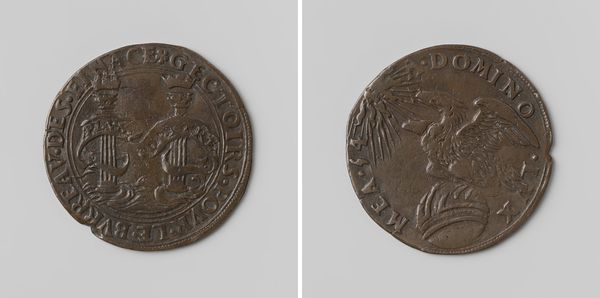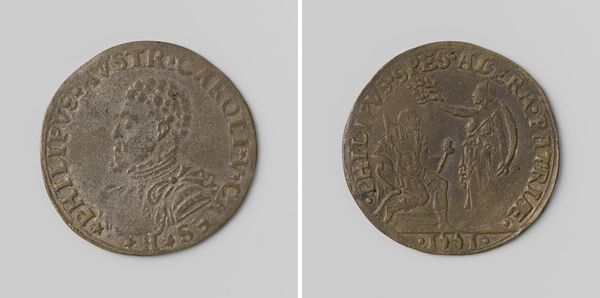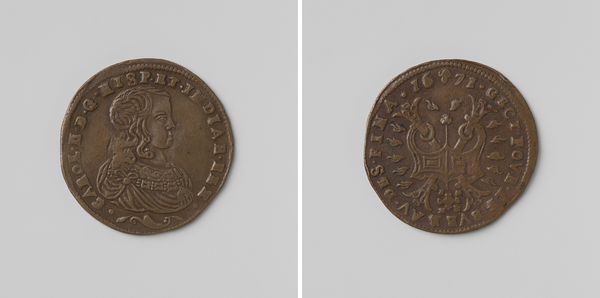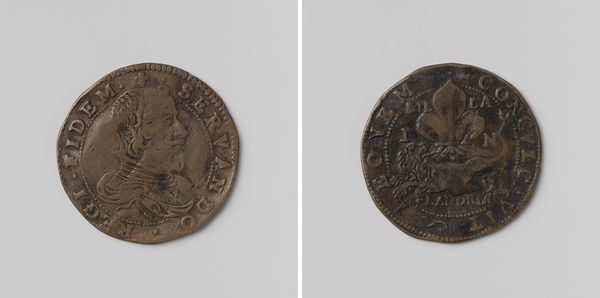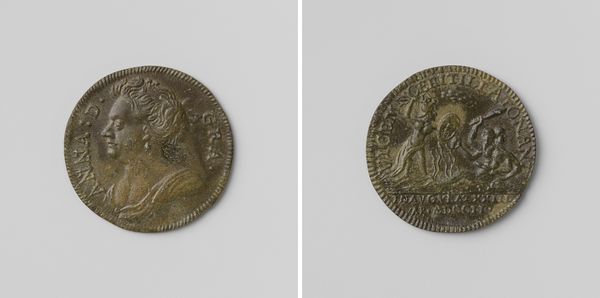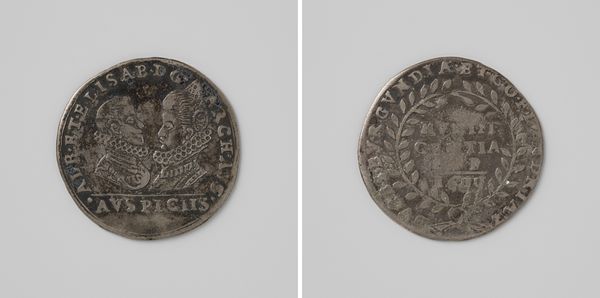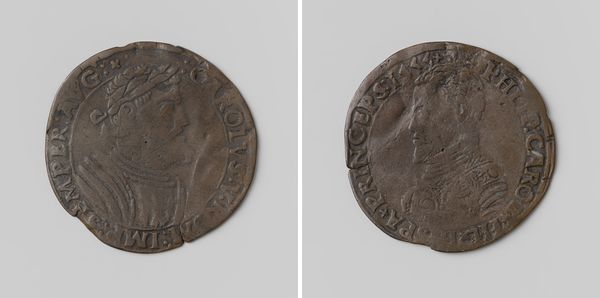
print, metal, relief, sculpture
#
portrait
#
decorative element
#
medieval
# print
#
metal
#
detailed texture
#
relief
#
sculptural image
#
sculpture
Dimensions: diameter 2.8 cm, weight 3.90 gr
Copyright: Rijks Museum: Open Domain
Curator: Let’s examine this interesting piece: "Hoop op vrede, ter ere van Karel V, Duits keizer", a metal relief from 1552, currently at the Rijksmuseum. Editor: It's fascinating! This metal relief, created to honor Charles V, feels weighty, both literally and symbolically. Given that this is a *printed* artwork, not a painting or typical drawing, it has interesting historical roots. I wonder, what is significant about a *print* portraying him instead of other medium? Curator: Exactly. The choice of a metal relief print over more conventional portraiture is critical. We need to ask: why metal? Why a relief, allowing for reproduction? Metal itself conveys power, durability, and the permanence desired for the Emperor's image. The act of striking this relief—think of the labor, the process of die-making, and the dissemination—signals the mass production and spread of propaganda. Were these reliefs intended to circulate widely, or were they exclusive objects for the elite? Editor: That's a really good point about it being reproducible to a degree. I guess what I’m trying to figure out is: what was the intent and context for a "printed" sculptural image like this at this time? Curator: Consider the economic factors at play. Metalworking was a highly skilled trade, controlled by guilds. This piece signifies not just imperial power but the power of the artisan class responsible for its fabrication. Its reproduction potential, though likely limited compared to later printing technologies, suggests an attempt to circulate the image of Charles V beyond the confines of the court. The dove and city imagery on the reverse: how did the cost and complexity of including these affect the print run and its distribution, and thus its impact on early audiences? Editor: Thinking about it as a product of both imperial power and skilled labor shifts my understanding entirely. The materials, the method… they all tell a story beyond just the image of the Emperor. Curator: Precisely. By focusing on the material conditions of its making, we gain insight into the complex social and economic relationships that shaped even seemingly straightforward celebratory artworks. Editor: That's so insightful, thank you. I'll definitely look at art with a materialist perspective more often from now on.
Comments
No comments
Be the first to comment and join the conversation on the ultimate creative platform.

